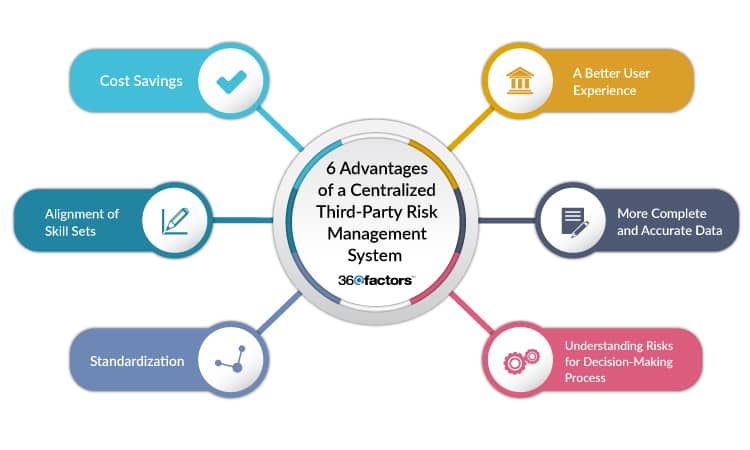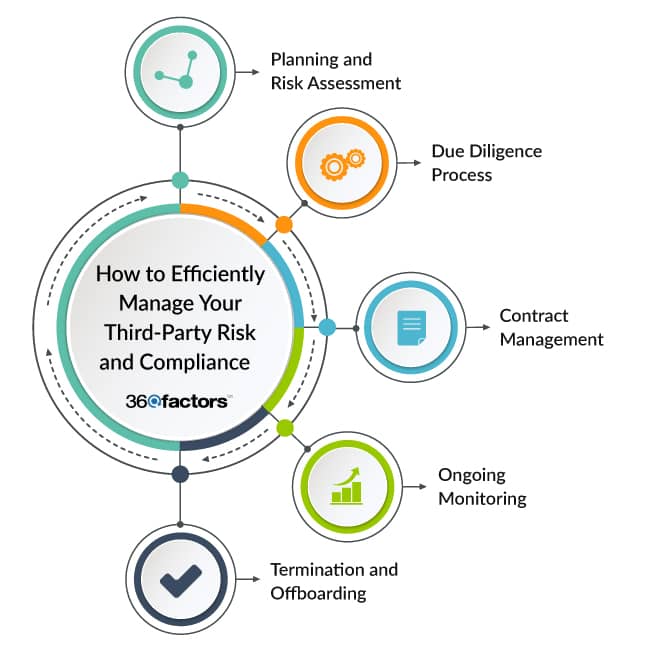Home/ Blog / Discover the 6 Evident Advantages of a Centralized and Improved Third-Party Risk Management
In today’s globalized business environment, the sophisticated network of third-party relationships has conveyed exceptional challenges and opportunities in risk management. Improved Third-Party Risk Management has emerged as a pivotal focus for organizations navigating this complex environment. The 2023 Ernst & Young Global Third-Party Risk Management survey sheds light on this critical aspect, revealing a significant shift in how organizations approach and prioritize their third-party risk strategies. This evolution is based on regulatory demands and is a strategic imperative to bolster business resilience and operational effectiveness.
The landscape of third-party risk management is undergoing rapid transformation, driven by various challenges such as cybersecurity risks, complex supply chain dependencies, and the increasing reliance on external partners. The survey highlights a pivotal trend toward centralized and improved third-party risk management models, with 90% of organizations moving in this direction.
This shift underscores a growing recognition of the benefits of a centralized approach, which offers a more comprehensive and cohesive view of third-party risks, thus enabling more effective and strategic risk mitigation. In this blog, we will explore the 6 benefits of a centralized third-party risk management system and how it functions to improve the overall TPRM.
6 Advantages of a Centralized Third-Party Risk Management System
The 2023 EY Global Third-Party Risk Management Survey illustrates the versatile benefits of a centralized and improved third-party risk management approach. As businesses grasp the complexities of managing external partnerships, a centralized 3rd party risk management solution emerges as a beacon of efficiency and security. Here, we explore the six key advantages as reported in the survey:

1. A Better User Experience
Centralized TPRM systems significantly enhance the user experience. By streamlining processes and providing a unified platform for risk assessment and management, these systems reduce complexities and improve usability for all stakeholders involved. This user-friendly approach simplifies the workflow and encourages consistent and active engagement in risk management practices.
2. More Complete and Accurate Data
The availability of comprehensive and precise data is one of the cornerstones of effective and improved third-party risk management. Centralized TPRM systems excel in aggregating data from various sources, ensuring the information is complete and accurate. This robust data foundation is crucial for making informed decisions and effectively identifying potential risks.
3. Understanding Risks for Decision-Making Process
With centralized TPRM, organizations gain a deeper and better understanding of risks during decision-making. This enhanced insight is invaluable for developing proactive strategies and making well-informed decisions aligned with the organization’s risk appetite and business objectives.
4. Cost Savings
Implementing a centralized TPRM system can lead to significant cost savings. Organizations can work toward an improved third-party risk management system that lowers their expenditure by consolidating resources and eliminating redundant processes. This efficiency reduces direct costs and contributes to long-term financial stability by mitigating potential risks that could lead to expensive setbacks.
5. Alignment of Skill Sets
A centralized third-party risk management program fosters the alignment of skill sets across the organization. It creates a harmonized environment where different departments and personnel can collaborate effectively, cohesively leveraging their respective expertise. This alignment is essential for a holistic and well-rounded approach to risk management.
6. Standardization
Standardization is another critical benefit of achieving centralized and improved third-party risk management. It ensures that risk management practices adhere to consistent standards and protocols. This uniformity is vital for maintaining control and clarity in risk management operations, especially in large and complex organizations.
How to Efficiently Manage Your Third-Party Risk and Compliance
In the realm of third-party risk and compliance management, adopting a strategic and integrated approach is crucial for organizations aiming to navigate the complexities of modern business partnerships. To efficiently manage third-party risk and compliance, financial organizations should follow the process outlined below:

Planning and Risk Assessment
The initial step involves appropriate planning for third-party relationships. One way to accomplish this is by organizing and managing third parties in a risk register for improved third-party risk management. Businesses must set up a framework to evaluate third-party risk through an enterprise risk management lens.
Due Diligence Process
This stage involves requesting, evaluating, and storing critical third-party documents like SOC Reports. During the evaluation phase, an initial risk assessment is critical to identify potential risks early on.
Risk intelligence is vital to assess financial stability, cybersecurity, and compliance of potential third-party associates.
Contract Management
Managing third-party documentation, contracts, and related activities in your third-party risk management framework is critical. A detailed review of the terms of the contract ensures everything is in order and any disputes can be resolved amicably, which leads to improved third-party risk management.
This step often involves a designated team member overseeing the review of contracts and comparison of multiple third parties to select the best prospect.
Ongoing Monitoring and Compliance Testing
Regular risk assessments and compliance testing are crucial for maintaining an up-to-date understanding of third-party risks. This includes monitoring critical risk metrics for changes or new developments and conducting regular compliance testing, such as security assessments and policy reviews. Securely storing third-party documents in a centralized system is also essential for robust ongoing monitoring.
Termination and Offboarding
Developing standardized, configurable offboarding workflows for terminating third-party relationships is essential. This includes clear steps and documentation for notification of contract conclusion, determination of transitioning responsibilities, handoff recording, and final exit procedures.
Conclusion
To wrap up our exploration of improved third-party risk management, it’s essential to highlight the transformative impact of advanced solutions such as Predict360 Third-Party Risk and Compliance Management to achieve this goal. It enhances your Third-Party Risk Management program based on the Guidance issued by the FDIC, OCC, and FRB. The benefits of Predict360 TPRM are multiple, making it a pivotal tool for organizations aiming to enhance their TPRM strategies.
One of the critical advantages of the Predict360 TPRM solution is its integrated risk intelligence capability. This feature allows organizations to gain a deeper understanding of their third-party risks. By leveraging predictive analytics, this improved third-party risk management solution enables businesses to anticipate potential risks and compliance issues, fostering a proactive risk management approach.
Another significant benefit of the Predict360 Third Party Risk Management Software is its centralized documentation and contract management system. This centralized approach streamlines the management process, ensuring all critical information is easily accessible and manageable. This enhances operational efficiency and reduces the likelihood of oversight, a common challenge in third-party risk management.
Request a Demo
Complete the form below and our business team will be in touch to schedule a product demo.
By clicking ‘SUBMIT’ you agree to our Privacy Policy.



